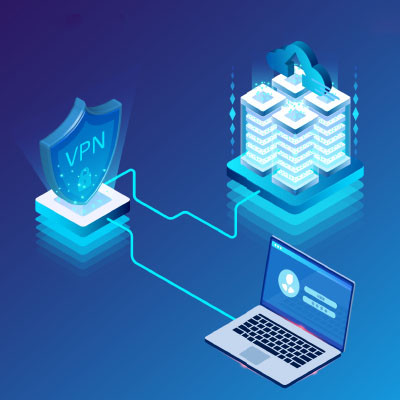
- Home
- About Us
- IT Services
- Managed IT Services
- Security Services
- Cybersecurity
- Cybersecurity Overview
- Network Security
- Business Security
- Unified Threat Management
- Endpoint Security Solutions
- Asset Tracking
- Mobile Device Management
- Email Encryption
- Multi-Factor Authentication
- Spam Protection
- Content Filtering
- Phishing Simulation
- Dark Web Monitoring
- Penetration Testing
- Compliance Standards
- Cloud Computing Services
- Industry Specific
- Data Services
- Hardware Services
- Software Services
- Business Communication
- Understanding IT
- News
- Blog
- Support
- Contact Us
- (217) 428-6449
- Register
- Login
Network Solutions Unlimited Blog
Your network is a crucial part of your business, insofar as it is quite literally what powers your operations and enables you to work productively… at least, most of the time. Unfortunately, there is always the risk of a network bottleneck, or a limited capacity for data to move due to a lack of available bandwidth. So, how can these bottlenecks be avoided?
“I just wanted to take a second to thank the sponsor of this video, [insert VPN provider here], for supporting the channel!”
If you’ve been on YouTube in the past few years, this message likely sounds pretty familiar. Virtual private network providers have been taking advantage of the trend of influencer marketing to spread awareness of their largely obscure product—often, offering an enticing deal. While we have and will continue to promote the use of a VPN for business purposes, we wanted to clarify something here: these are not the VPNs we’re saying you should use.
Unfortunately, some businesses have had to learn the hard way in order to pay attention to their business’ cybersecurity efforts. These cautionary tales aren’t lost on many business owners, but in some cases, they are still ignored. That’s where we come in. Today, we thought we would go through some basic things that any organization needs to know to keep their business safe.
Remember when you needed a wired connection between two endpoints in order to access important materials for your business? Thanks to wireless connectivity, businesses can now access online materials in a much easier fashion. The question then becomes, how does a wired connection improve your operations, and is it a benefit for your organization?
As your business grows and your list of achievements grows ever longer, you will eventually realize that your network cannot keep up with the strain you place on it every day. When your network experiences so much traffic that it buckles under the pressure, or slows to a crawl, we call that a network bottleneck, and it can be indicative of other problems on your infrastructure that must be addressed.
For those of us that don’t have access to fiber-to-the-home or LTE Internet, the cable modem is a must-have. You can always rent a modem from your ISP or you can purchase your own, but no matter what your decision is, knowing what to look for when modem shopping is advantageous. Let’s take a look.
Some business decisions are easy, like when to go to lunch, for example. Others aren’t nearly as cut and dry, like where to go for lunch. If you think that one’s tough, consider the weight of some of the decisions you have to make concerning your business’ technology. Here, we’ll review a few ways to help simplify the decision-making process for you and your team.
Connectivity to high-speed, broadband Internet has quickly transitioned from a convenient luxury to a practical need for personal life and business alike. Considering this, it seems amazing that Internet access isn’t nearly as equally distributed as the need for it is. However, the Federal Communications Commission is calling on the public to help them change that by downloading an application that they first released in 2013: FCC Speed Test.
A business’ computing network is one of their most important tools. Therefore, it’s extremely important that it is managed and maintained properly. Today, we’ll go over a few tips you should keep in mind to ensure that your IT network is managed and secure.
If your business uses as much technology as the average business, you will need to ensure that it is properly documented. Today, we’ll go through what a managed service provider includes in their documentation practices.
Wireless Internet connectivity is an indispensable utility in today’s modern office. However, implementing one that will perform optimally is far from a straightforward task. Here, we wanted to offer you some tips to make the planning process for your Wi-Fi implementation both simpler, and more productive.
A wireless network is one of the most useful technologies you have in your home or office. Oftentimes, however, it is set up quickly and will have a hard time broadcasting a signal to the corners of your office. Today, we will discuss ways to ensure that your business (or your home) has the coverage you need it to have, and how to get it if it doesn’t.
Depending on the company, the Internet connection is perhaps the most important part of its IT infrastructure, especially if it has remote workers or multiple offices connected by a Wide Area Network (WAN). Other technologies such as VoIP, screen-sharing, and webinars also benefit from optimized bandwidth. Today, we’ll talk about bandwidth, what your company’s needs are, and how to get the Internet service that is right for you.
A server is a very important piece of the modern business’ technology infrastructure, and so it is important to understand what it is that could cause it to crash. Here, we’ll go over some of the most common crash causes to help you determine how to best take care of it.
A slow network can be an infuriating problem under any circumstances, but in the business setting, not understanding its cause can potentially be devastating to operations. For this week’s tip, we’ll examine a few of the most common causes of this slowness, and some of the best ways to resolve the issue at hand.
Does your organization have an internal IT department? If so, you’ve probably noticed that they are too busy problem solving to focus on improving your infrastructure. If they do have time to innovate, chances are they’re neglecting important maintenance. All it takes to improving your infrastructure and operations is, contacting your local managed service provider.
With businesses relying more and more on portability and mobility, it should come as no surprise that businesses also have to devote more time to the proper management of their wireless network. A considerable portion of this management is reliant on the router the business uses, as without the router, the business simply couldn’t have a wireless connection.
Is your business prepared to deal with network downtime? By this, we mean any situation when your organization’s network infrastructure isn’t operating as intended. Maybe you’ve lost power in your office, or you’ve experienced a data loss incident that keeps you from accessing crucial information. To prepare your SMB for times like this, you need to ask if your organization can handle such a wasteful occurrence.
How many ways can you think of to share a file between two workstations? The more ways you know how to share a file, the less chance there is that you’ll be stuck without access to critical files due to an Internet outage. This week’s tip will inform you of four different ways to help your business share files.
Latest News & Events
Account Login
Contact Us
Learn more about what Network Solutions Unlimited can do for your business.
(217) 428-6449
3090 N Main St
Decatur, Illinois 62526















